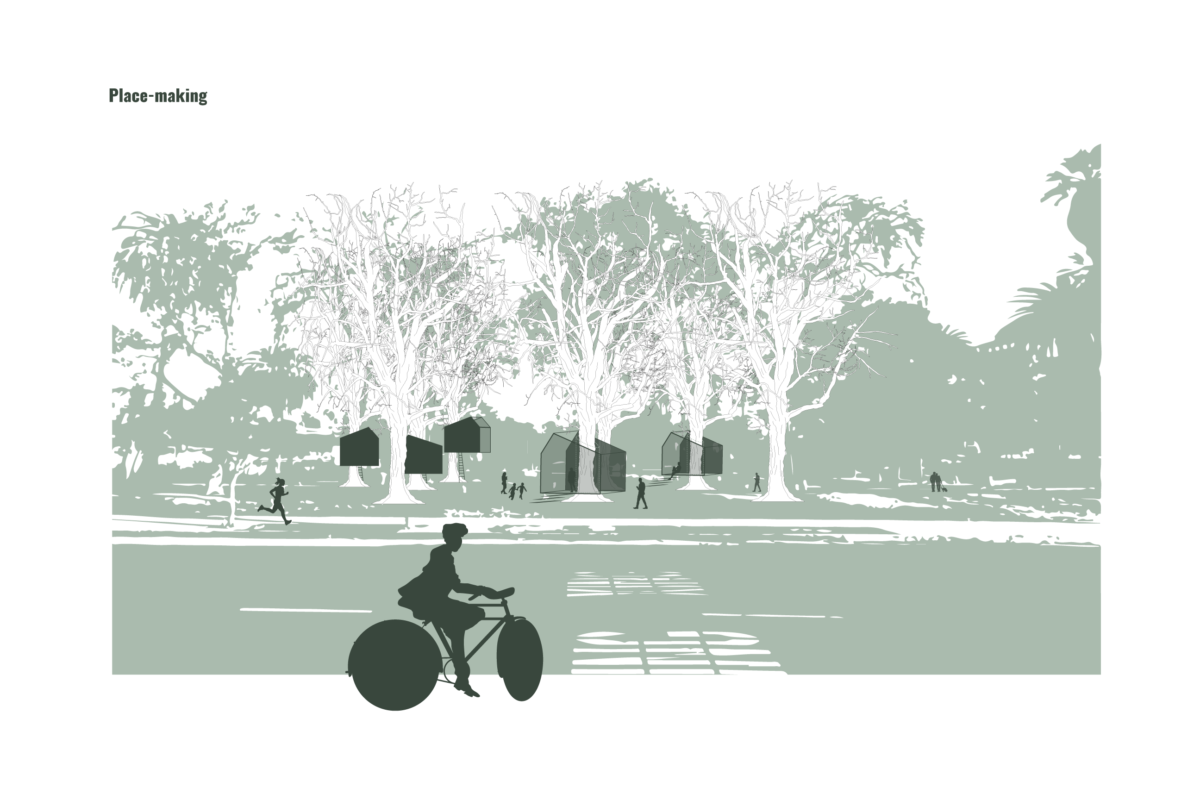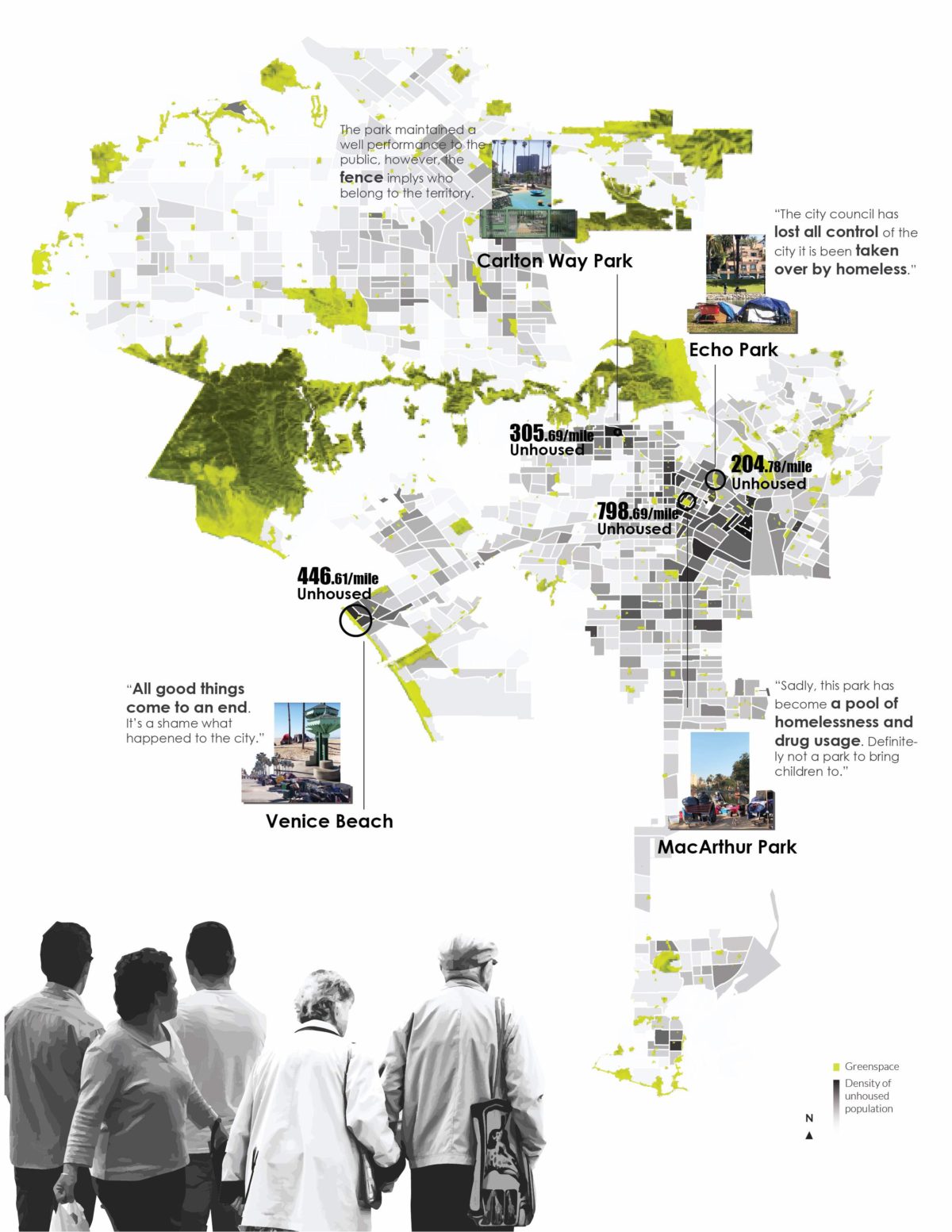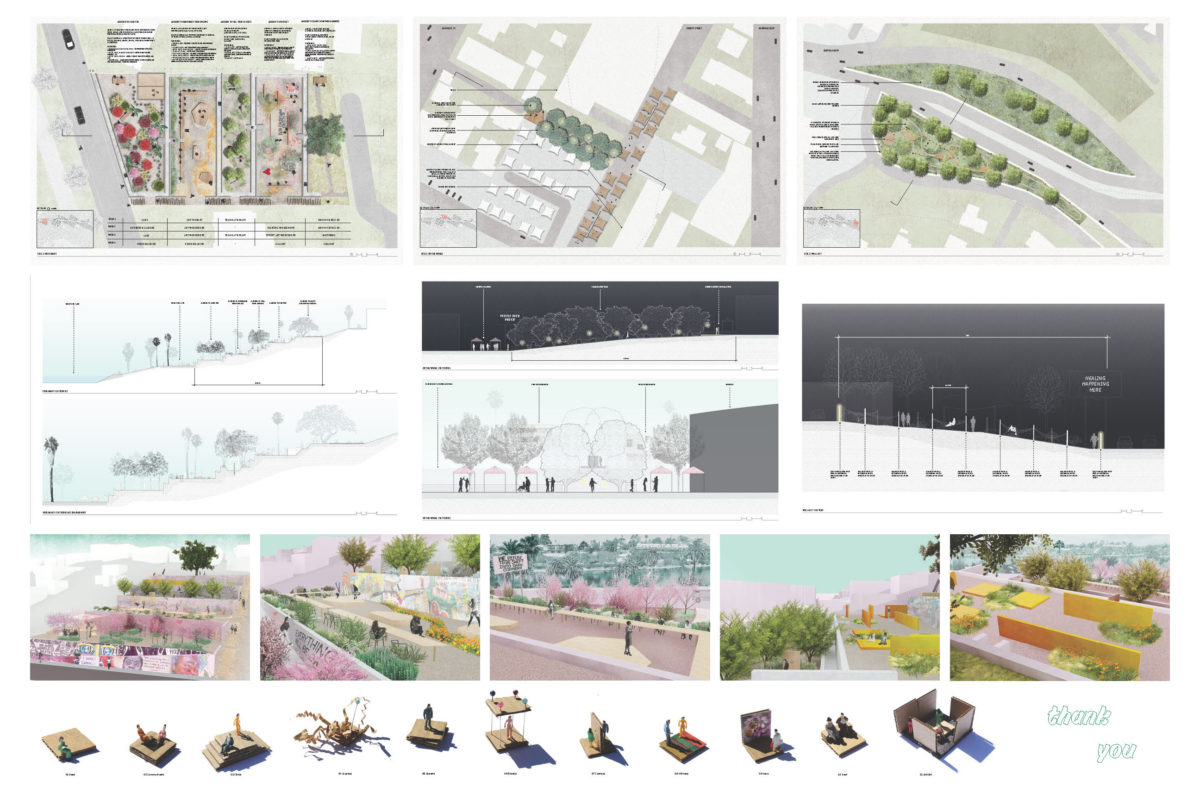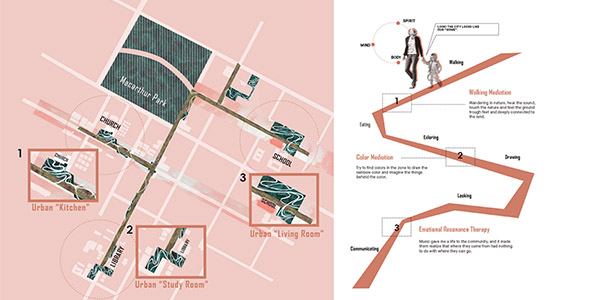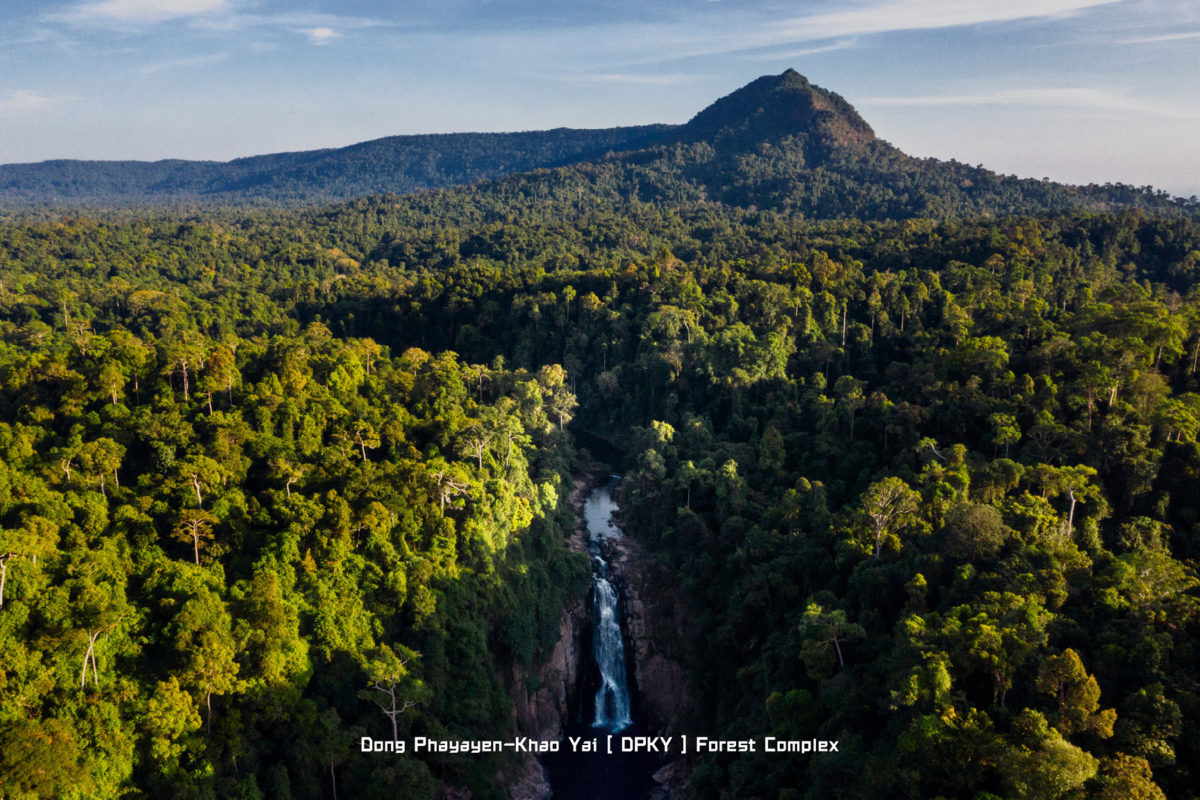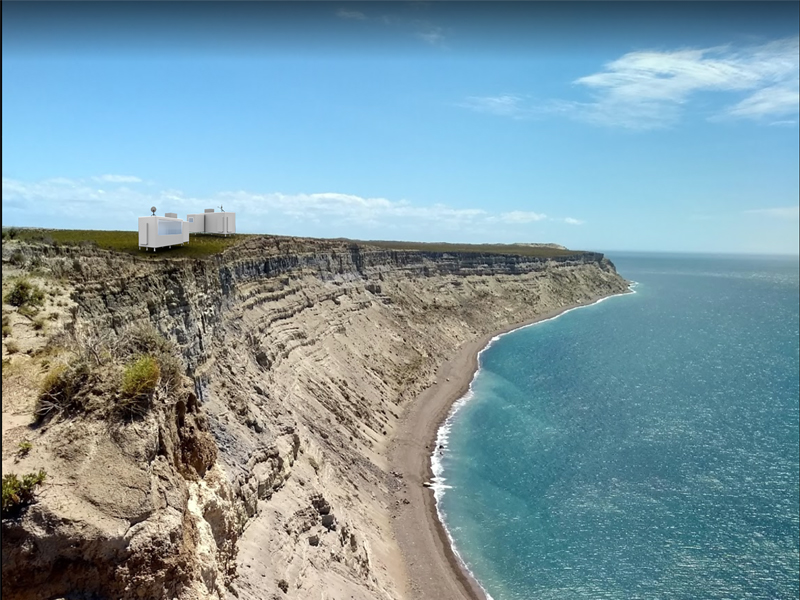I am interested in exploring strategies toward the effective use of community space between drug users and housed families. Because I want to find safe outdoor relief models that offer inte- grated responsibility for homelessness users and their neighbors. In order to understand how to mitigate conflicts spatially and emotionally between community groups in public space. I am working at MacArthur park in the West-Lake neighborhood. This research began to look into the site background. This neighborhood has gone through several stages, from streetcar suburbs, dis-invested neighborhoods with the construction of Wilshire Bled and white flight, immigrant enclaves, to settlement of immigrants and their families.
